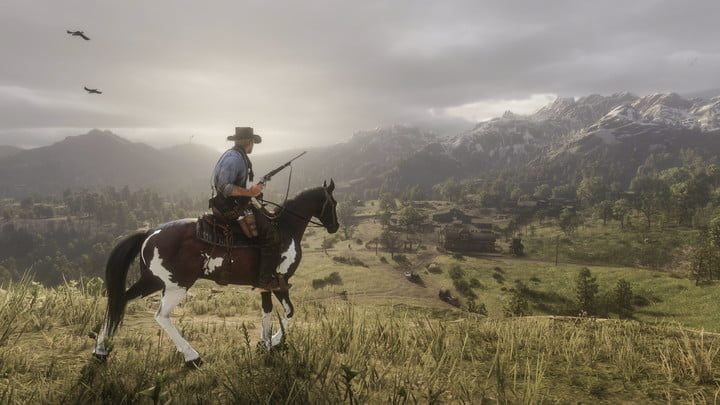Video games have evolved tremendously from the first prototypes of the 1970s that look like they’re from a whole different universe. The growth of video games has been fuelled by two key factors: innovation and technological development, and proliferation. We moved from arcade games like Gun Fight, Tank, and Space Race to three-dimensional, open-world experiences. With new technologies advancing year on year, the industry just keeps getting bigger and video game developers are now renowned as entertainment powerhouses.
The creators of virtual worlds are taking gamers on a tour across the world throughout various periods of time. From the Berlin of 1945 and the ghost towns of the West to modern-day New York and the Amazon rainforest, with the help of 3D graphics, virtual reality technology, and artificial intelligence, everything is possible. The advent of the console made home gaming reality and changed the face of gaming into what it is today, but the technological advancements that followed are able to create visuals powerful enough to propel you to a whole different place.
“Assassin’s Creed Venice” (CC BY 2.0) by Cea.
Exploring Europe
There aren’t many other games that have done a better job than Assassin’s Creed when it comes to taking a highly recognizable city and turning it into a video game setting, without being able to tell the difference. This game series has allowed its players to explore entire cities throughout various periods of time. In Assassin’s Creed 2, the country of choice is Italy and the period of choice is the Italian Renaissance, spanning from the 14th century through the 17th century. You can jump from roof to roof in Venice or climb on the top of Il Duomo in Florence while witnessing the historical struggles of that time.
The immersive location experience doesn’t end with Italian cities, though, and Assassin’s Creed has made it an integral part of its plot to move around the map. This push for exploration is justified with gorgeous, vivid visuals that capture the real world in an uncanny manner, thanks to the quality of modern graphics. For example, Paris has never looked more beautiful than it did in Assassin’s Creed Unity, with incredible building details, particularly on Notre Dame, and with people roaming the streets like they do in real life. Meanwhile, Assassin’s Creed Syndicate’s Victorian London is the most detailed city in the series to date.
However, it’s not only the Assassin’s Creed game franchise that has taken a shot at recreating famous European cities. Metro 2033, a first-person shooter game set post-nuclear war, in which survivors are taking refuge in the Metro tunnels of Moscow, does a really good job at recreating the city’s buildings, landmarks, and especially the stations. Although most games pick western locations, it’s interesting to see Eastern European cities and parts of their culture on the gaming map.
“Marvel’s Spider-Man” (CC BY-NC 2.0) by K-putt
See All Sides of America
Of course, many games have used New York as the setting for their plots, with Assassin’s Creed 3, Marvel’s Spider-Man, and Grand Theft Auto IV being the most popular examples. The award for the best representation, though, goes to Marvel’s Spider-Man. A lot of work went into creating such a detailed map of the New York area, which was divided into 800 square sections. The game encapsulates the atmosphere of the vibrant neighbourhoods while capturing the Big Apple’s essence. You can jump and climb every single building and skyscraper and once you’re at the top, you get breathtaking views of the skyline.
For something a bit different, you can check out the Portal series, set in the fictional Aperture Science Enrichment Centre in Michigan. Michigan is considered the centre of the US automotive industry, which ties in perfectly with the plot that focuses on the discovery of portal technology. Unlike other American cities, Michigan isn’t an obvious choice, but it’s interesting to see location diversity in video games.
In reality, the entertainment sector is making similar moves to expand location diversity in terms of where games developers are based. A prime example of this can be seen within the iGaming industry, which has monopolised the fact that online casinos were recently made legal within the state of Michigan. The result has been a boom in the availability of Michigan casinos online, so much so that directories have taken to organising competitors by ratings, welcome bonuses and incentives. Evidently, it’s possible for solid efforts to put even the most unexpected of places on the map.
Do you want to explore even more real-world locations than the ones presented above? Don’t worry because there are plenty of other choices, from Uncharted, which lets you peek into the ancient world and its mysteries, to Sleeping Dogs that depicts Hong Kong’s nighttime atmosphere to the nail. Developers have really outdone themselves in recent years and we’re really excited for what is about to come.













![[Rumor] Capcom is reportedly working on a new Dead Rising](https://vgleaks.com/wp-content/uploads/2025/12/capcom-logo-150x150.jpg)

